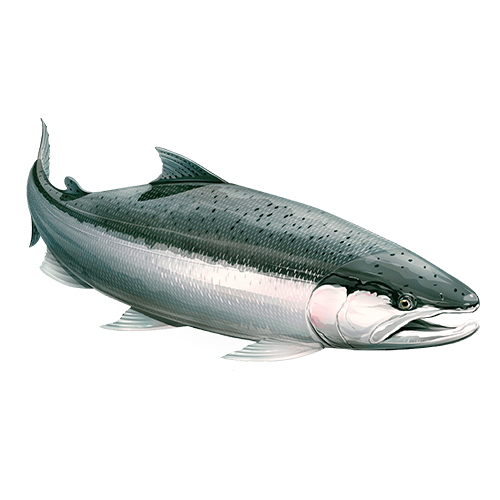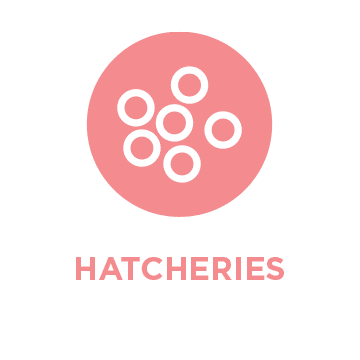How we're working to save them:
- Protect source waters in remaining CCC Coho salmon watersheds including the Garcia, Noyo, and Gualala rivers and Lagunitas, Scott, and Waddell creeks.
- Develop and maintain restoration hatcheries to be used in conjunction with habitat improvement and evaluation measures to boost populations and increase the genetic diversity of CCC Coho.
- Increase inter-agency cooperation, private landowner partnerships, mobilization of public opinion, and development of an extensive monitoring program to maintain CCC Coho salmon.
Where to find Central California Coast Coho Salmon:
Central California Coast Coho Salmon Distribution
How they Central California Coast Coho Salmon Scored:


Characteristics
CCC Coho salmon are identical in appearance and habits to Southern Oregon Northern California Coast (SONCC) Coho to the north. They can only be distinguished by differences in geographic range and genetics.
Abundance
Almost all of the remaining streams containing CCC Coho salmon have populations less than 100 spawning adults per year, unless enhanced through hatcheries. Most CCC Coho populations are threatened with extinction in the near future, with the exception of populations in Lagunitas Creek (Marin County), the Russian River (Sonoma County), and Santa Cruz County watersheds due largely to the heroic efforts of managers, concerned citizens, and conservation hatcheries.
Habitat & Behavior
Habitat requirements of CCC Coho salmon are similar to SONCC Coho salmon. Timing of streamflows is critically important to CCC Coho salmon, which need cold water at specific times to support successful spawning and juvenile survival. Severe high flow events that occur early in winter (December, January) can scour holding pools, move large wood cover, open lagoon mouths for migration, and generally improve Coho habitat, while similar flood events later in the season (February, March) can wash away redds and eggs or flush juvenile CCC Coho out of over-wintering habitat such as pools, side channels, or estuaries.
Genetics
CCC Coho salmon are most similar to Coho in neighboring watersheds than they are to Coho in Northern California or Southern Oregon.
- All
- _proof
- 50th
- Action Alert
- Bay Area
- Bay Area
- Blue Ribbon Waters
- California Water
- CalTrout People
- CalTrout Promo
- Campaigns
- Central Valley
- Central Valley
- Dams
- Diversity Equity Inclusion
- Eel River
- Event
- Events
- Featured
- Featured Watersheds
- Field Notes
- Fly Fishing
- From CalTrout
- Fun
- Hat Creek Restoration Project
- Imperiled Native Trout
- Initiatives
- Integrate Wild Fish & Working Landscapes
- Integrate Wild Fish & Working Landscapes
- Integrate Wild Fish and Working Landscapes
- Invasive Species
- Job Postings
- Key Initiative
- Klamath River Restoration
- Legal & Policy
- Legislation
- Migration Matters
- Mount Shasta / Klamath
- Mt. Lassen
- Mt. Lassen
- Mt. Shasta/Klamath
- News
- North Coast
- North Coast
- Podcast
- Podcast
- Press Releases
- Protect The Best
- Protect the Best
- Protect The Best
- Protect The Best
- Reconnect Habitat
- Reconnect Habitat
- Reconnect Habitat
- Regions
- Restore Estuaries
- Restore Estuaries
- Restore Estuaries
- Science
- Science Into Action
- SCRSC
- Sierra Headwaters
- Sierra Headwaters
- SOS Report
- South Coast
- South Coast
- Steelhead & Salmon
- Steward Source Water Areas
- Steward Source Water Areas
- Streamkeeper's Blog
- Trout
- Uncategorized
- video
- Voices of the Watershed
- Water Talks
- Women of CalTrout
- Youth


























 Dams block access to historical spawning and rearing habitats. Downstream, dams alter the timing, frequency, duration, magnitude, and rate of change of flows decreasing habitat quality and survival.
Dams block access to historical spawning and rearing habitats. Downstream, dams alter the timing, frequency, duration, magnitude, and rate of change of flows decreasing habitat quality and survival.